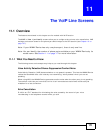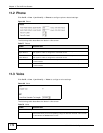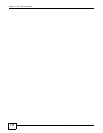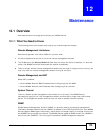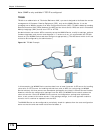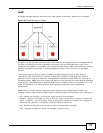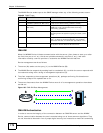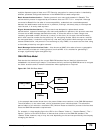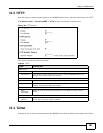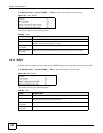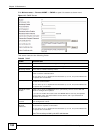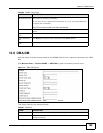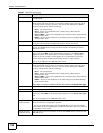
Chapter 12 Maintenance
WiMAX Device Configuration User’s Guide
179
multiple disparate types of data over HTTP. Security encryption for communication is handled by
different processes configured elsewhere in the WiMAX Device’s web configurator
Basic Access Authentication
– Sends a person’s user name and password in Base64. This
authentication protocol is supported by all browsers that are HTTP 1.0/1.1 compliant. Although
converted to Base64 for the sake of cross-compatibility, credentials are nonetheless passed
between the web browser and the server in plaintext, making it extremely easy to intercept and
read. As such, it is rarely used anymore.
Digest Access Authentication
– This protocol was designed to replace basic access
authentication. Instead of encoding a user name and password in plaintext, this protocol uses what
is known as an MD5 message authentication code. It allows the server to issue a single-use,
randomly generated number (known as a ‘nonce’) to the client (in this case, the web browser),
which then uses the number as the ‘public key’ for encrypting its data. When the server receives
the encrypted data, it unlocks it using the ‘key’ that was just provided. While stronger than basic
access authentication, this protocol is not as strong as, say, HMAC, or as secure as the client using
a client-side private key encryption scheme.
Hash Message Authentication Code
– Also known as HMAC, this code relies on cryptographic
hash functions to bolster an existing protocol, such as MD5. It is a method for generating a
stronger, significantly higher encryption key.
OMA-DM Data Model
Each device that conforms to the current OMA-DM standard has an identical data structure
embedded in its controlling firmware. This allows a similarly conforming OMA-DM server to navigate
the folder structure and to make file alterations where appropriate or required.
Figure 104 OMA-DM Data Model
In the example data model shown here, the parent folders must conform to the OMA-DM standard.
The child folders, on the other hand, can be customized on an individual basis. This allows the
parent folders to all maintain a consistent URI (Uniform Resource Identifier) across all devices that
meet the OMA-DM standard’s requirements.
For example, in the preceding figure the URI for the “Games” folder is “./Vendor/Games/”. The “./
Vendor/” portion of the URI exists on all devices that conform to the OMA-DM standard. The
“Games” folder, however, may or may not exist depending on the services provided by the company
managing the device.
Root Folder
./
DMAcc
Vendor
Operator
MP3s
Games



